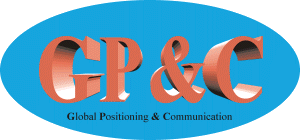

This patent declaration has been submitted to ICAO and IMO in accordance with ITU's "code of practice".
2 September, 1996
To whom it may concern
within ICAO and IMO
Re: Potential Intellectual Property rights related to the so-called VDL Mode 4/STDMA
and the IMO 4S Transponder,
During the standardisation processes within the UN Specialised Agencies ICAO
(International Civil Aviation Organisation) and IMO (International Maritime Organisation)
questions have been raised concerning how to handle potential intellectual property rights
related to technologies that are subject to international standardisation within those UN
agencies,
On request by ICAO AMCP the member of ICAO AMCP (Aeronautical Mobile Communications Panel)
nominated by the Swedish Civil Aviation Administration conducted a brief survey of the
issues in 1995. The results from this brief survey has been reported to the ICAO AMCP in
Working Paper no 15 to AMCP Working Group D/4, September 1995. Despite the fact that there
are several technologies presently considered within the standardisation processes (at
least within ICAO) that may have implications on intellectual property rights the main
focus has been on the ICAO VDL Mode 4/STDMA and its maritime equivalent the IMO 4S
Transponder. Attached to the report from the ICAO AMCP/4 meeting is a copy of the patent
application's for the so-called Self Organising Time Division Multiple Access (STDMA)
technology and a letter dated 19 July 1996 from the ICAO Secretariat is addressing a
number of questions related to the issues,
Similar questions have been raised within IMO and in a letter dated 2 May 1996 the
inventor has on behalf of the owners responded to the questions and closed that the owners
are prepared to grant licenses to interested manufacturers in accordance with ITU's
"code of practice" par. 2.2. In subsequent discussions with representatives of
IMO on 30 August 1996 this position has been reconfirmed.
As the named inventor of the STDMA technology I have been asked to make the following
additional clarifications of the subject matters:
1 . The validity of any patent can be challenged and it is therefore difficult to give
definite answers to several of the related questions. What parts of e.g. the ICAO SARPs
for VDL Mode 4 that may be patent rights applicable could be assessed by anyone skilled in
the area on the basis of the copy of the STDMA patent application's distributed by ICAO
AMCP.
The prime objective of the, owners of the STDMA technology is to facilitate its wide
spread introduction and use for the benefits of the transport industry. A secondary goal
is to get a reasonable return on investments made during the development and
standardisation work,
In the few cases where patents have been granted and licenses are sold those arrangements
include special conditions regarding civil aviation and civil maritime application's for
which only non-exclusive world-wide licences have been granted. Possible patents will be
transferred to national interests on those conditions. This is made with the special
purpose to facilitate international standardisation and foster world-wide competition.
Consequently, there are no exclusive rights granted for such application's and the
possibility that parts of the technology is patentable should help rather than hinder the
ambitions by any responsible organisations representing users interest in having systems
implemented that could provide multipurpose functions, enhance safety, are compatible, and
thus that they could provide a high level of commonality and interoperability.
2. The owners of the STDMA technology or their authorised representative are
prepared to negotiate transfer of licences on reasonable terms and conditions to any
competent and interested party in accordance with ITU's "code of practice" par.
2.2. Should such negotiations fail or regarded unacceptable by any State, international or
national arbitration would also be accepted.
3. The general conditions of licence agreements are in accordance with common
international business practices, However, as future licenses have to be similar to
licenses already granted this implies that only nonexclusive world-wide licences for civil
aviation and civil maritime application's are granted,
4. The technical details on all potentially patentable parts of the STDMA
technology has been distributed e.g. by ICAO AMCP as an attachment to the report from the
ICAO AMCP/4 meeting.
The information presented above may be used in communications with the appropriate
international standardisation bodies such as ICAO, IMO and ITU.
On behalf of GPOC Systems Est.
Håkan Lans
Inventor
GP&C Systems International
Ringvägen 56E
133 35 Saltsjöbaden
Sweden
Patent declaration as MS WORD dokument
Seach words: GPC Systems International AB, GNSS-Transponder, GNSS Transponder, GP&C Transponder, GPS-Transponder, STDMA data link, SOTDMA, ICAO VDL Mode 2, ICAO VDL Mode 3, ICAO VDL Mode 4, ADS-B broadcast, Surveillance, Mode S Squitter, GPS-Squitter, AMASS, ASDE, TCAS, CDTI, DGPS, DGNSS, GBAS, LAAS, ICAO/AMCP, RTCA Task Force 3, Free Flight Steering Committee, Flight 2000, CNS/ATM, NEAN, NEAP, NAAN, FARAWAY, SUPRA, MAGNET-B, FREER, PETALII, 4S Transponder, AIS transponder, Håkan Lans, Hakan Lans, http://www.gpc.se, http://www.gpc.se